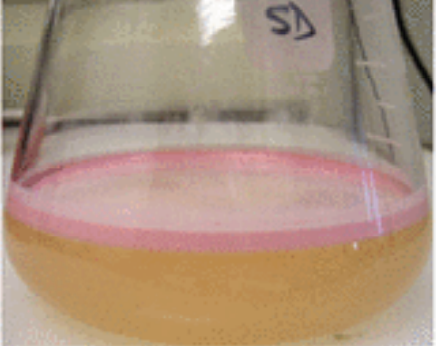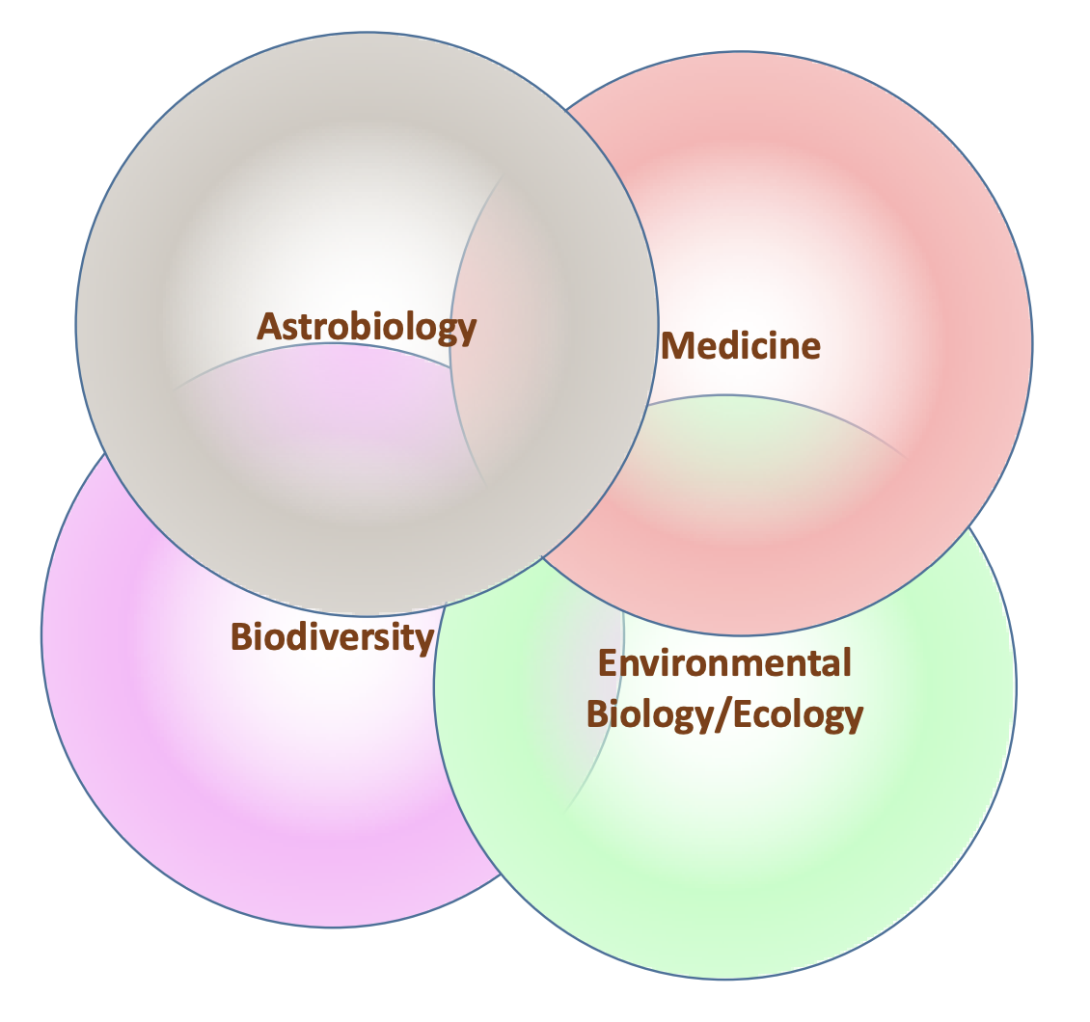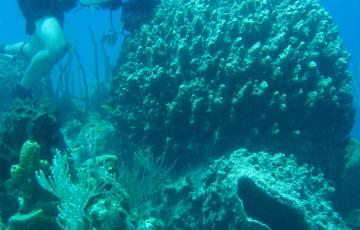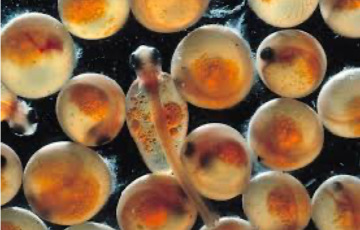What are Haloarchaea?
To download the activity page, click here.

Haloarchaea are organisms of ancient origin that live in very salty environments
The microbes that the DasSarma Lab works on are here today, all over the world, and they are beautiful, extremely hardy, single-celled organisms that need 10 times more salt than you find in seawater to survive. They live in places like the Great Salt Lake and the Dead Sea. They can be seen from the space station by NASA astronauts, who have photographed them. They are so tiny that a million of them would fit on the tip of a pin.
Through a combination of microbiology, genetics, genomics, bioinformatics, and transcriptomics, we have studied these novel microbes and how they adapt to challenging habitats. We are using them to understand how life exists in extreme environments on Earth, and how and where life may exist elsewhere. The purple pigment in its membrane is being used to look for “biosignatures” on planets outside our solar system (“exoplanets”).
Why should we study haloarchaea?

The DasSarma Lab at IMET collaborates with scientists, educators and students all over the world. Some are in the high Andes in Bolivia. Others are in the beautiful State of Bangalore, India, and the Dead Sea.
Recently, we collaborated with students in Death Valley, California to send the microbes into the closest thing to a Mars-environment – up into Earth’s stratosphere. The students launched the microbes 30 to 35 kilometers , where the conditions are much like those on Mars—where rovers are currently searching for signs of past or present life.
Since the recent discovery of what are predicted to be highly salty seasonal flows on Mars, it is possible that this may be a perfect environment for these salt-loving organisms. The haloarchaea we study can tolerate and survive vast amounts of IR and UV radiation, low oxygen levels, and drying down in salt crystals. These extreme conditions would kill almost every other forms of Earthlings, but not the salt-loving archaea. They are members of an ancient kingdom that existed even before Earth had an oxygen atmosphere.
Halophilic microbes have many valuable qualities. They contain hearty enzymes which are used in many practical applications such as in detergents and food processing. They also contain nanoparticles that are being used for biomedical applications such as a vaccine against malaria. These are the two funded projects (from NASA and NIH) in the DasSarma laboratory.
Learn more with MolGenT
MolGenT is an electronic tutor for teaching and learning concepts in molecular genetics. There are sections on Inheritance, DNA & Genes, Gene Expression, and Biotechnology Applications. Find it here.


